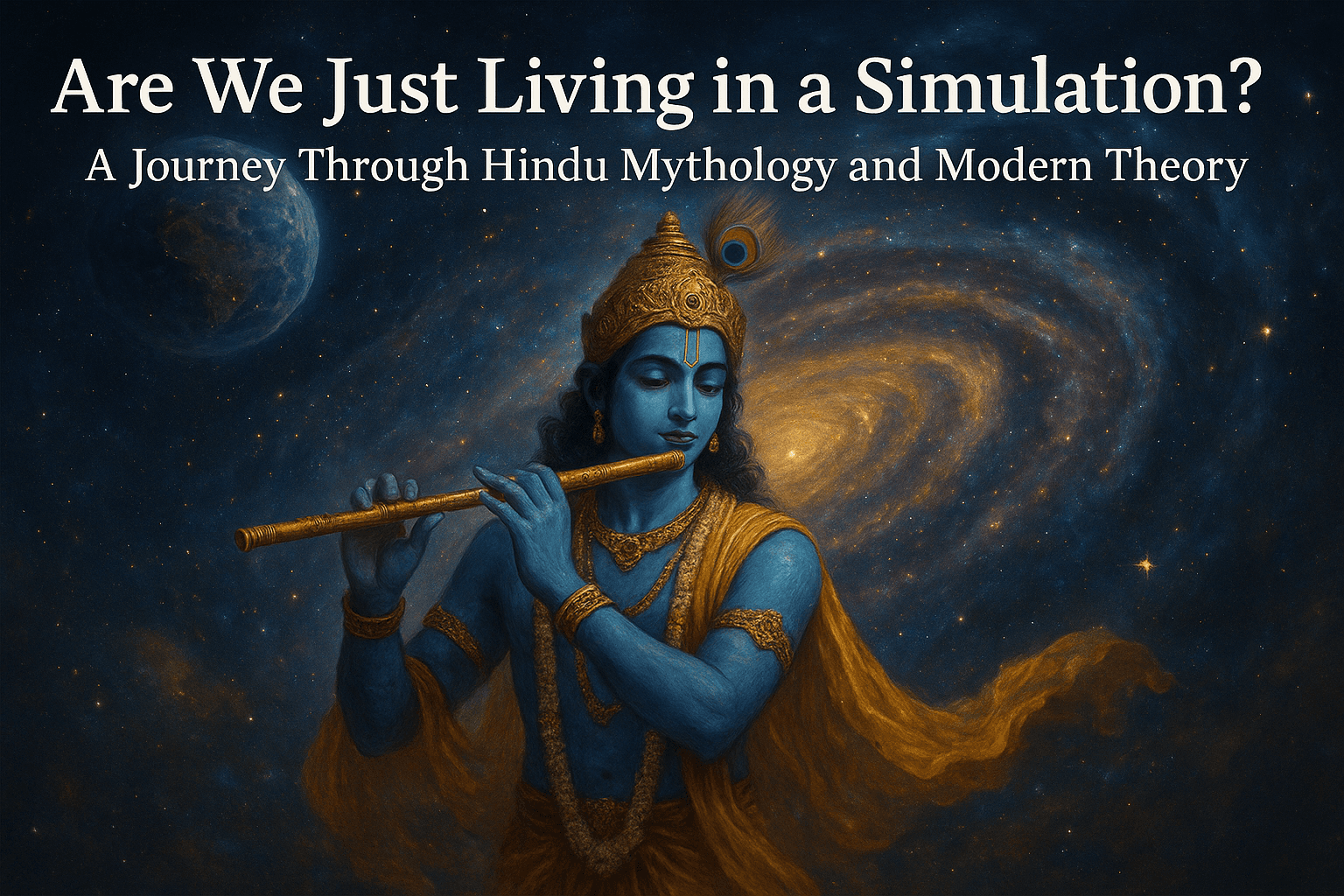Are We Just Living in a Simulation? A Journey Through Hindu Mythology and Modern Theory

Introduction
In the age of rapid technological advancement, the idea that we might be living inside a simulation—a hyper-realistic, computer-generated reality—has captivated scientists, philosophers, and tech enthusiasts alike. But what if this idea isn't so new after all?
Centuries before Elon Musk and simulation theory, Hindu mythology offered remarkably similar perspectives on the nature of reality, consciousness, and illusion. Could our ancestors have already understood what we’re only beginning to explore?
Simulation Theory: A Quick Primer
The Simulation Hypothesis, popularized by philosopher Nick Bostrom and later endorsed by thinkers like Elon Musk, suggests that:
Advanced civilizations could run simulations of past beings.
We may be one of those simulations.
If such simulations are possible and common, it's more likely we're in one than not.
Now, let’s explore how Hinduism mirrors this.
Maya: The Illusion of Reality
In Hindu philosophy, particularly in Vedanta, the world we perceive is called Maya, meaning illusion.
According to the Upanishads, Maya veils the true nature of reality (Brahman).
Just like a dream feels real until we wake up, this material world feels real until we awaken spiritually.
Our identities, experiences, and perceptions are transient—simulated by Maya, much like code simulates experiences in a virtual world.
Doesn’t that sound a lot like being inside a simulation?
The Cosmic Dreamer: Vishnu’s Dream
One of the most poetic metaphors comes from the Puranas, where Lord Vishnu is seen lying on the cosmic ocean, in a deep meditative sleep. From his dream, the universe is born.
The entire cosmos is a projection from Vishnu’s dream.
Brahma (the creator) emerges from Vishnu's navel and begins shaping the world.
This aligns eerily with the idea of a powerful being running or dreaming a simulation.
If the universe is someone's dream, how different is that from being part of a simulated program?
Avatars: Code Updates in the Cosmic Simulation?
In Hinduism, whenever Dharma (cosmic order) falters, avatars like Rama, Krishna, or Narasimha descend to restore balance.
Think of them as "patch updates" or "reboots" to the cosmic simulation.
They enter the world, reset the system, defeat malware (evil), and re-establish code integrity (Dharma).
It’s not far from how a programmer enters their simulation to fix bugs and optimize performance.
Karma and Rebirth: The Program Runs Until You Break the Cycle
The concept of Karma and Samsara (rebirth) aligns well with simulated loops:
You keep coming back, lifetime after lifetime, until you break the cycle (Moksha).
Moksha is akin to exiting the simulation, realizing the Self, and merging with the ultimate source (Brahman).
Much like a character in a video game leveling up to eventually “exit” the game.
The Observer Is Everything: Consciousness Over Matter
One of the core themes in both simulation theory and Hinduism is the primacy of the observer.
In modern physics, quantum mechanics shows that observation affects reality.
In Hinduism, consciousness (Atman) is the true reality; the world outside is a temporary construct.
If consciousness is all that truly exists, then what we see is just a rendered illusion—a simulation generated for the observer.
Conclusion: Simulation or Spiritual Insight?
Whether it’s through modern science or ancient scripture, the core idea remains the same: the world is not what it seems.
Hindu mythology, with its rich allegories and metaphysical insights, might not have used the term “simulation,” but it certainly laid the groundwork for the idea that:
Reality is an illusion.
Our experiences are part of a larger, possibly pre-programmed system.
Liberation lies in waking up from the illusion.
So, are we just living in a simulation? Maybe the sages of ancient India already knew the answer.
Thought to Ponder:
"You are not in the world. The world is in you." – Ashtavakra Gita